
Midtown Madness is a 1999 racing game developed by Angel Studios and published by Microsoft for Microsoft Windows. The demo version was released in April 1999. Two sequels followed, with Midtown Madness 2 released in September 2000 and Midtown Madness 3 released in June 2003 for the Xbox. The game is set in Chicago; the object is for the player to win street races and obtain new cars.

Trespasser is a 1998 action-adventure video game developed by DreamWorks Interactive and published by Electronic Arts for Microsoft Windows. The game serves as a sequel to the 1997 film The Lost World: Jurassic Park, taking place a year after the film's events. Players control Anne, the sole survivor of a plane crash that leaves her stranded on a remote island with genetically engineered dinosaurs. It features the voices of Minnie Driver as Anne and Richard Attenborough as John Hammond, reprising his role from the film series.

Dungeon Keeper 2 is a strategy game developed by Bullfrog Productions and published by Electronic Arts in 1999 for Microsoft Windows. In the sequel to Dungeon Keeper, the player takes the role of a 'dungeon keeper', building and defending an underground dungeon from the would-be heroes that would invade it, as well as from other keepers. In the campaign mode, the player is charged with recovering the portal gems from each area in order to open a portal to the surface. The player can also construct a dungeon without strict objectives, and multiplayer is supported over a network.

Star Wars: Force Commander is a real-time strategy video game released for the Microsoft Windows platform in 2000. It was co-developed by Ronin Entertainment and LucasArts, and published by LucasArts. Its plot interweaves between Star Wars: A New Hope and Return of the Jedi, taking place in key battles. Peter McConnell created remixed tracks of John Williams's original score with influences from hard rock and techno music.
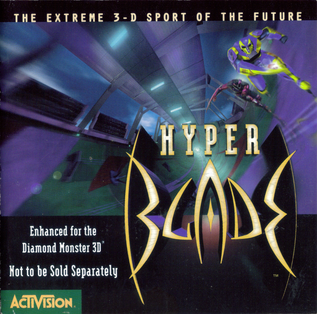
HyperBlade is an action video game, depicting a futuristic sport in a futuristic world. The sport is a mutated version of hockey, played in an egg-shaped arena rather than on a flat field or rink, which is loaded with weapons and deadly traps.

Need for Speed: High Stakes, released as Need for Speed: Road Challenge in Europe, is a 1999 racing video game developed by EA Canada and EA Seattle and published by Electronic Arts for the PlayStation and Microsoft Windows. It is the fourth game in the Need for Speed series and a follow-up to Need for Speed III: Hot Pursuit. The game features more realistic elements than its predecessors and introduced a damage system that allows cars to take damage when colliding with objects, affecting their appearance and performance. It also introduced a series of economy-based tournaments, awarding players with a cash prize that can be spent on repairing, purchasing, or upgrading cars for subsequent races. The game's Hot Pursuit mode, which was introduced in Hot Pursuit, was expanded with more options, allowing players to control police pursuits attempting to stop racers.
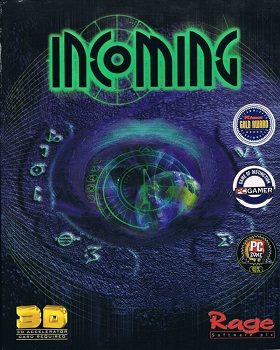
Incoming is a 3D shooter video game developed and published by Rage Software. The game was first released for Microsoft Windows in mid-1998, and was followed by a Dreamcast version, which was released in Japan on December 17, 1998, in Europe on October 14, 1999, and in North America on September 15, 1999. Set in the near-future of 2009, the game primarily revolves around controlling vehicles and turrets to fight alien invaders of Earth in one of the campaign modes, the arcade mode, and with or against another player. Some levels include brief real-time strategy segments.

Monster Truck Madness is a racing video game developed by Terminal Reality and published by Microsoft. It was released in North America on September 9, 1996. The game has twelve monster trucks and tasks the player with beating computer opponents. Checkpoints, multiple hidden shortcuts, and interactable objects commonly appear in the tracks. In the garage, the player modifies the truck to account for terrain surfaces. Online multiplayer is accessed with a modem, a local area network (LAN), or TCP/IP.
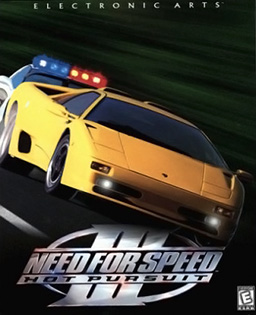
Need for Speed III: Hot Pursuit is a 1998 racing video game developed for PlayStation by EA Canada and Microsoft Windows by EA Seattle, and published by Electronic Arts. It is the third major installment in the Need for Speed franchise, incorporating police pursuits as a major part of gameplay. Hot Pursuit remains focused on racing using exotic sports cars, but features races that primarily take place in locations within North America, including varied settings and climates. Police AI is improved over the first game, utilizing several tactics to stop both the player and opponent. The PlayStation version was released on March 25, 1998, while the Windows version was released on October 12 the same year. The game received critical success, with praise for its graphics and customization options. It received a direct sequel in 2002 and a reboot in 2010.
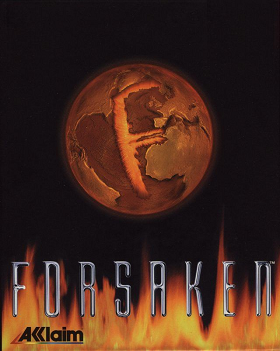
Forsaken is a 1998 first-person shooter video game. It was developed by Probe Entertainment for Microsoft Windows and PlayStation and Iguana UK for the Nintendo 64 and published by Acclaim Entertainment. A remastered version was released in 2018 for Microsoft Windows, macOS, Linux and Xbox One.

Motorhead: High Velocity Entertainment is a racing video game developed by Digital Illusions CE AB for PlayStation and Microsoft Windows. The game was published in Europe by Gremlin Interactive, and in North America by Fox Interactive.

Actua Golf 2 is a sports video game developed and published by Gremlin Interactive for PlayStation and Microsoft Windows. Development of the game was underway as of August 1997, and it was released in September 1997 in Europe, and in June 1998 in North America. A Sega Saturn version was planned, but eventually cancelled.
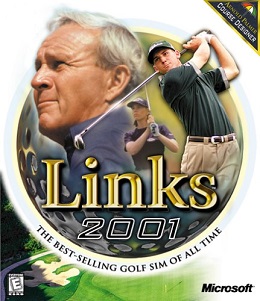
Links 2001 is a golf-based sports simulation game developed by Access Software and Microsoft Games Group and published by Microsoft. It is part of the Links series and follows Links LS 2000. It is the first game in the series to include a golf course designer, allowing the player to create custom courses. It also features Arnold Palmer, Sergio García, and Annika Sörenstam as playable golfers.

Jack Nicklaus 6: Golden Bear Challenge is a golf video game developed by Hypnos Entertainment and published by Activision for Microsoft Windows. It is part of a series of golfing games named after golfer Jack Nicklaus, and is the first in the series to feature him as a playable golfer. Producer and designer Mike Franco, who produced previous games in the series, began working on the game in November 1997, when Jack Nicklaus 5 was released.

Links LS 2000 is a golf video game developed by Access Software and published by Microsoft. It is part of the Links series and was released in 1999 for Microsoft Windows, and in 2000 for Macintosh. It was followed by Links 2001.

Microsoft Golf 1998 Edition is a 1998 golf video game developed by American studio Friendly Software and published by Microsoft for Microsoft Windows. It is the fourth game in the Microsoft Golf series, following Microsoft Golf 3.0. The game uses a revamped design that is substantially different from its predecessors.

Microsoft Golf 1999 Edition is a golf video game developed by American studio Friendly Software and published by Microsoft for Microsoft Windows. It was released in the United States in late 1998. It is the fifth game in the Microsoft Golf series, following Microsoft Golf 1998 Edition, which was also developed by Friendly Software.

Links Extreme is a 1999 golf video game developed by Access Software and published by Microsoft for Microsoft Windows. It is the first game in the Links series to be published by Microsoft, which purchased Access Software a month prior to the game's release.

PGA Championship Golf 1999 Edition is a 1999 golf video game developed by Headgate Studios and published by Sierra Sports for Microsoft Windows. The game includes eight golf courses and a golf swing method known as TrueSwing, which uses the movement of the computer mouse to simulate a golf swing in real-time as the player makes the shot. Also included is the ReadyPlay feature, allowing golfers in a multiplayer group to play at their own pace without waiting for others to finish their turn. The game was praised for its variety, including its TrueSwing and ReadyPlay features, although its golf commentary was criticized. The game was followed by a sequel, PGA Championship Golf 2000.
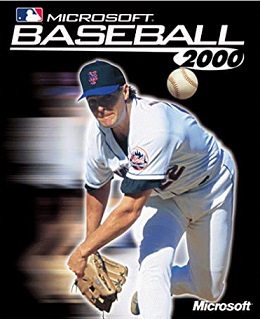
Microsoft Baseball 2000 is a sports video game developed by WizBang! Software Productions and published by Microsoft. It was released for Microsoft Windows in 1999, as an updated version of Microsoft Baseball 3D 1998 Edition. Critics considered the game to be an improvement over its predecessor. It received praise for its graphics and $20 price, but was criticized for containing various glitches. It was followed by Microsoft Baseball 2001.




















